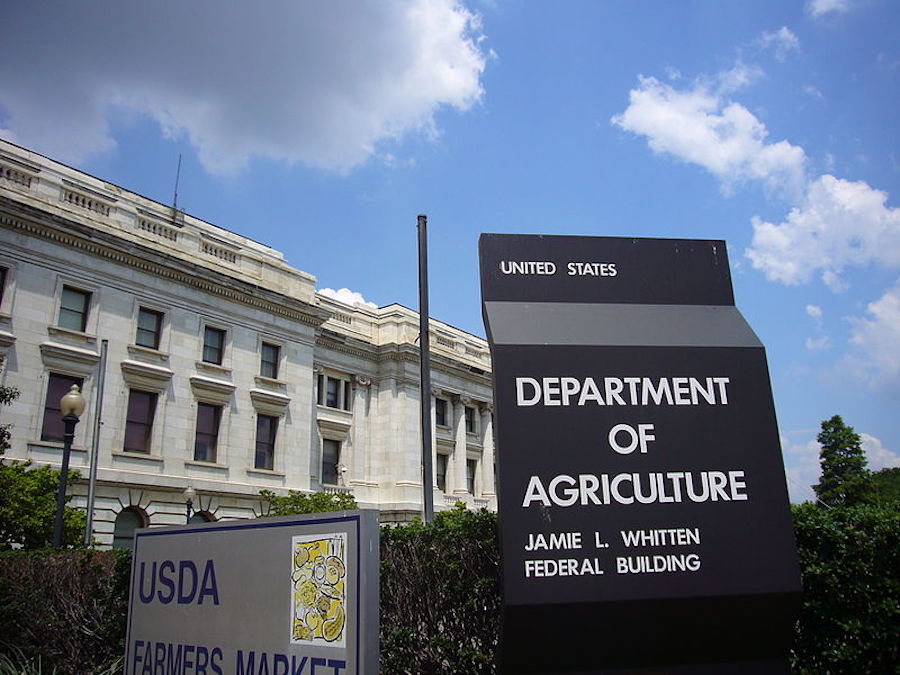Total corruption: Government regulators relied on industry-funded herbicide studies to declare glyphosate safe
03/14/2019 / By Ethan Huff

When the U.S. Environmental Protection Agency (EPA) announced a designation of “safe and effective” with regards to Monsanto’s infamously controversial Roundup (glyphosate-based) herbicide, in direct contradiction to opposing findings by the International Agency for Research on Cancer (IARC) that identified glyphosate as a “probable human carcinogen,” the pro-chemical lobby quickly declared itself the victor in this heated and ongoing debate. But what the public was never told is that the EPA relied largely on industry-funded pseudoscience in giving its stamp of approval for glyphosate, while IARC carefully considered legitimate, peer-reviewed scientific studies before ultimately concluding and declaring that Roundup more than likely causes cancer.
As reported by Colin Todhunter of Off-Guardian.org (and republished by CounterPunch.org), these disparate findings between the EPA and IARC have continued to fuel an ongoing battle by independent activists against Big Agrochemical, particularly in Europe where Dr. Charles M. Benbrook published a study baring the full truth about the corruption within the EPA that led the industry-compromised agency to make a patently false declaration about the alleged safety and effectiveness of Roundup and glyphosate.
As revealed by Dr. Benbrook in his paper, the EPA’s consortium of “evidence” proving the safety and effectiveness of glyphosate was mostly derived from the very corporations that profit from its sale. IARC, on the other hand, looked at real published science that wasn’t tainted by the chemical industry, and that simply evaluated glyphosate from a neutral perspective.
“EPA and IARC reached diametrically opposed conclusions on glyphosate genotoxicity for three primary reasons,” Dr. Benbrook explains in his paper, these three reasons, verbatim, being:
• “(1) in the core tables compiled by EPA and IARC, the EPA relied mostly on registrant-commissioned, unpublished regulatory studies, 99% of which were negative, while IARC relied mostly on peer-reviewed studies of which 70% were positive (83 of 118).”
• (2) “EPA’s evaluation was largely based on data from studies on technical glyphosate, whereas IARC’s review placed heavy weight on the results of formulated GBH and AMPA assays.”
• (3) “EPA’s evaluation was focused on typical, general population dietary exposures assuming legal, food-crop uses, and did not take into account, nor address generally higher occupational exposures and risks. IARC’s assessment encompassed data from typical dietary, occupational, and elevated exposure scenarios.”
For more related news on glyphosate and Roundup, be sure to check out Glyphosate.news and Roundup.news.
Editor of Environmental Sciences Europe writes commentary in support of Dr. Benbrook’s study
Professor Thomas Backhaus, the editor-in-chief of the journal in which Dr. Benbrook’s groundbreaking study was published, Environmental Sciences Europe, was so compelled by Dr. Benbrook’s revelations that he penned his own commentary in support of it, knowing that it would likely receive backlash from the chemical industry.
“We are convinced that the article provides new insights on why different conclusions regarding the carcinogenicity of glyphosate and GBHs [glyphosate-based herbicides] were reached by the U.S. EPA and IARC,” Prof. Backhaus wrote. “It is an important contribution to the discussion on the genotoxicity of GBHs.”
Dr. Rosemary Mason, a campaigner working hard to stop the use of glyphosate and Roundup in Europe, back in January lodged a complaint with the European Ombudsman based on this and other evidence suggesting that glyphosate is, in fact, not safe at all. She says European regulatory agencies are guilty of colluding with Big Agrochemical to approve dangerous crop chemicals that are harming and killing people.
The European Ombudsman has since rejected Dr. Mason’s complaint, who in response wrote a 25-page document outlining the many negative impacts of glyphosate and Roundup both on human health and the environment. She also explains in this paper how the chemical industry has pulled a fast one on the public by corrupting regulatory bodies in to keeping the herbicide on the market, despite its well-known dangers.
Be sure to read Colin Todhunter’s full report of these recent events at this link.
Sources for this article include:
Tagged Under: Big Agrochemical, cancer, corruption, deception, Dr. Charles Benbrook, Dr. Rosemary Mason, Environmental Protection Agency, environmental science, Environmental Sciences Europe, EPA, glyphosate, herbicide, herbicides, IARC, International Agency for Research on Cancer, lies, pesticide, Professor Thomas Backhaus, research, Roundup, safety, Study




















